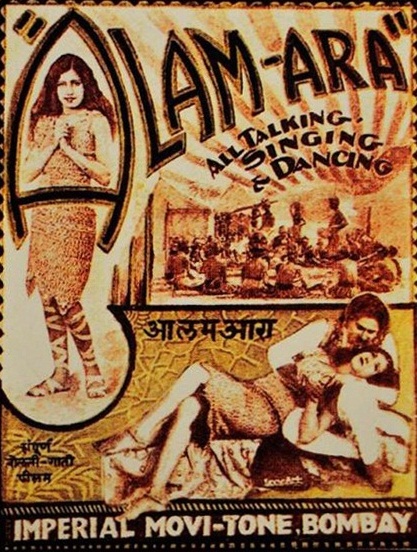by Courtney Carroll
Charles Dickens is well known for his close examination of working conditions in 19th-century London in his works of fiction. Forced at the age of 12 to work at a boot black factory and repay his father’s debts, Dickens in later life scrutinized and criticized the labor conditions, specifically child labor conditions, in notable works such as Oliver Twist and David Copperfield.
 Charles Dickens
Charles Dickens
In 1842, Dickens embarked on a four-month excursion through America that included a visit to Massachusetts. The resulting work, American Notes, is infamous for its criticisms of America and Americans, but less noted is the fact that Dickens found America’s factories laudable in many respects, including the treatment of workers.
Dickens visited several factories in Lowell, Massachusetts, where he was given tours of the factories “in their ordinary working aspect, with no preparation of any kind, or departure from their ordinary everyday proceedings.”
Ladies of the Mills
Dickens described the women of the mills as “well dressed” and wearing “serviceable bonnets, good warm cloaks and shawls.” The author also remarked that these women were “healthy in appearance” and that they “had the manners and deportment of young women, not of degrading brutes.”
Dickens was impressed not only by the appearance and comportment of these women, but also by their literacy. Many subscribed to the lending libraries often provided in the boarding houses, and some contributed to a periodical called The Lowell Offering. Dickens lauded this periodical as comparable “advantageously with a great many English Annuals” and bought a copy for himself, which he read all the way through. For the time period, this publication was a great feat for working-class women and was an achievement largely unimaginable for the workforce in Dickens’ native England.
Despite the fine dress and mannerisms, many of the women seen by Dickens came from humble backgrounds on Northern New England farms. According to Thomas Dublin’s analysis of the women in the Lowell Mills, 74 percent of the workforce in the Hamilton Manufacturing Company was female and 96 percent of those women were native born. The City of Lowell website states that the average age of a woman working in a mill was 24, with ages ranging from 10 to 30. In her account of working in the Lowell Mills, Harriet Robinson remembers country girls arriving at the corporations in covered wagons, often speaking in a “nasal Yankee twang” that was “almost unintelligible.” These country girls had little, if any, education, and no formal education was provided to them in Lowell. Instead, Robinson recounts, “the severe discipline and ridicule which met them was as good as a school education, and they were soon taught the ‘city way of speaking.’”
Not all women in the mills were of a rural descent or uneducated; some lived comfortable lifestyles but had been taught that “work is no disgrace.” According to Robinson, many came to Lowell for the social or literary advantages in Lowell, including the lending libraries and other luxuries.
Many of the women working in the factories lived in boarding houses on the factory property. These houses became centers of learning, culture and worship for their residents. Harriet Robinson recalls her stay in the boarding houses as “very agreeable” and described living with 50 to 60 women from all different backgrounds. In one article published in The Lowell Offering, the author recalled her 13-member “family” in the boarding house consisting of women who were “Calvinist Baptist, Unitarian, Congregational, Catholic, Episcopalian, and Mormonite, one each; Universalist and Methodist, two each; Christian Baptist, three.”
The residents were strongly encouraged to read, learn, and worship regularly, no matter what their denomination. Popular literary choices included novels, newspapers, bibles and periodicals, and many of these works were provided by a lending library for a small fee. These books would be the basis of learning for many of the women working in the mills.
Working Conditions
Upon touring three factories in Lowell in 1842, Dickens was fascinated by the order and comfort of the work stations. He described the factories as having “much fresh air, cleanliness and comfort as the nature of the occupation would possibly admit of.” Dickens also believed that the labor of these women was fitting of their delicate stature and that they enjoyed it, noting that their work was “cheerfully done and the occupation of tomorrow was cheerfully looked to.”
Dickens may have been too willing to believe in the workers taking so much pleasure in their labors. In 1845, 2,139 factory workers from across Massachusetts submitted a petition to the Massachusetts House of Labor for better working conditions. Of these, 1,159 were workers in the Lowell mills and a very large proportion of these were female. The main concerns of the workers were long hours, poor health as a result of unsatisfactory working conditions, and the brief time allowed for meals during the working day.
In the petition, Eliza R. Hemingway, a mill worker in two factories, complained that the “hours for labor [were] too many and the time for meals [were] too short”. The average working day for women in the Lowell mills was approximately 14 hours, with work starting at 5 a.m. and ending at 7 p.m. In summer, only 30 minutes wereallowed for breakfast and 45 minutes for dinner. In winter, The time allowed for dinner decreased to 30 minutes. During these breaks, women had to walk to their dormitories, eat, and walk back to their workstations.
Many women testified that long hours and unsanitary working conditions contributed to their poor health. Judith Paine worked for a year and a half in the Merrimack Cotton Mills before having to leave for seven years due to serious health concerns. After returning from her illness, she worked in the Boott Mills for seven more years, but was too sick to work for a full year of her employment there. She attributed her poor health to “long hours of labor, the shortness of time for meals, and the bad air of the mills.” Similarly, Sarah G. Bagley of New Hampshire testified that “the health of the operatives is not so good as the health of females who do house-work or millinery business,” suggesting that the health problems experienced by the Lowell mill workers were a direct result of the mills themselves. Sarah Bagley would later go on to form the Lowell Female Labor Reform Association to improve the working conditions for women in the Lowell factories.
Data taken by the Massachusetts House of Labor reveals that the most significant illnesses suffered during this period were consumption, inflammation of the lungs, cholera infantum, scarlet fever, measles, dysentery, inflammation of the brain, and croup. It should be noted that of these seven ailments, three are infectious and can be spread amongst people in close proximity. Three mill workers testified to the House of Labor that the air in the mills was considered “not to be wholesome” and “bad on account of the small particles of cotton which fly about.” The mill workers were in this atmosphere for fourteen hours per day, six days per week while they worked at very hot, humid, crowded workstations that served as a breeding ground for infectious diseases.
A Good System?
While Dickens was only in Lowell for a day in 1842, he was impressed by the mills of Lowell and the women who worked in them. By all appearances, these mills were clean and ordered and the ladies who worked there were happy and literate. However, the poor working conditions and long hours suffered and articulated by the mill girls differ greatly from Dickens’ account.
The discrepancy could have been due to many factors, the first being that Charles Dickens was only present for a brief visit in 1842, while the Lowell Mill System existed was an important element in the New England industrial economy for much of the nineteenth century.
According to Professor Joel Brattin, a Dickens Scholar at Worcester Polytechnic Institute, Dickens had a fondness for Massachusetts, despite his strong criticisms of America. In his American Notes, Dickens condemned Ameri
ca for its ongoing institution of slavery, tobacco spitting, and overwhelming greed. Despite his displeasure with many aspects of the American culture, Dickens had positive reviews of his visit to Boston and Lowell. While this fondness may not have directly swayed his review of the Lowell mill conditions, the fact remains that Dickens thought highly of Massachusetts.
In the final section of his review on the Lowell mills, Dickens states that he does not wish to compare the mills of Lowell to the mills of London due to “many of the circumstances whose strong influence [had] been at work for years in [England’s] manufacturing towns had not arisen [in Lowell].” Dickens erroneously believed that the manufacturing towns such as Lowell had no permanent residents, as many of the mill girls would come to Lowell to work and then return home for good after a few years. While this may have been true for some, others toiled away in the mills for many years to support their families.
As a resolute proponent for better labor conditions in England, Dickens might have found it difficult to compare and judge fairly the working conditions in both nations. Whatever the reason, Lowell turned out to be one of the few things about America that Dickens chose not criticize.





















